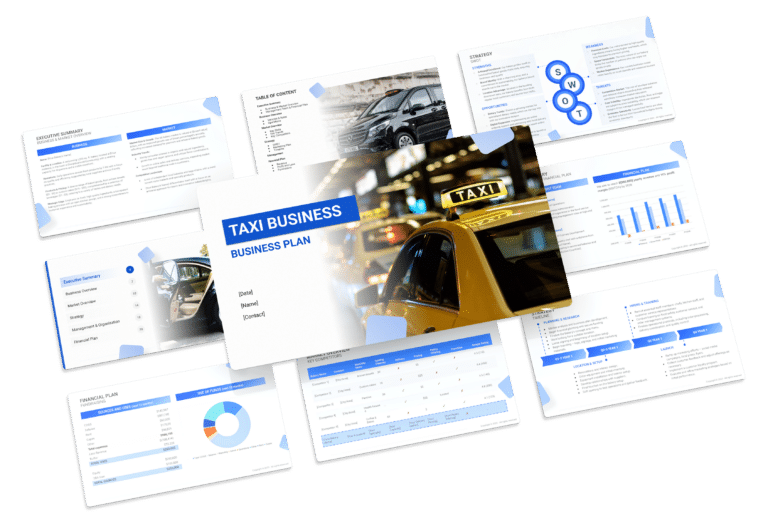How to Prepare a SWOT for a Courier Business (Example)

A SWOT analysis is essential for a courier company’s business plan. It helps owners understand their business’s strengths, weaknesses, opportunities, and threats.
Strengths and weaknesses are internal and manageable, while opportunities and threats come from outside the business. The analysis helps identify areas for growth and improvement.
For example, strengths might be a good delivery network and technology, while weaknesses could be old vehicles or limited area coverage.
This article will give examples and advice for including these in your business plan. Let’s dive in!
Strengths
Couriers possess inherent strengths that position them as vital players in the logistics and delivery ecosystem.
- Fast and Reliable Service: The cornerstone of a courier’s strength lies in providing fast and reliable delivery services, meeting the demand for swift transportation of goods.
- Example: Implementing advanced tracking systems and real-time updates ensures customers can monitor their deliveries with precision.
- Extensive Delivery Network: A strong and extensive delivery network enables couriers to reach diverse geographic locations efficiently, expanding their market reach.
- Example: Leveraging partnerships with local businesses and employing a fleet of diverse vehicles ensures seamless coverage across urban and rural areas.
- Customer Satisfaction and Loyalty: Couriers often build strong relationships with customers through exceptional service, fostering loyalty and positive brand perception.
- Example: Offering personalized delivery options, such as time-specific deliveries or package customization, enhances customer satisfaction and loyalty.
- Technological Integration for Efficiency: The integration of technology, such as route optimization software and digital communication tools, enhances operational efficiency.
- Example: Investing in AI-driven algorithms for route planning and leveraging mobile apps for real-time communication with drivers streamlines the entire delivery process.
Weaknesses
Acknowledging weaknesses is crucial for couriers to identify areas for improvement and enhance overall service quality.
- Dependence on Transportation Infrastructure: Couriers heavily rely on transportation infrastructure, and disruptions such as traffic jams or road closures can lead to delays.
- Example: Implementing contingency plans for unexpected traffic events and utilizing alternative routes using real-time traffic data can mitigate the impact of transportation issues.
- High Operational Costs: Maintaining a fleet of vehicles, employing delivery personnel, and investing in technology can contribute to high operational costs.
- Example: Exploring energy-efficient vehicles, optimizing delivery routes to reduce fuel consumption, and negotiating bulk purchase agreements for fuel can help manage operational expenses.
- Vulnerability to External Factors: External factors such as weather conditions or natural disasters can disrupt delivery schedules and affect service quality.
- Example: Establishing a communication protocol to alert customers about potential delays due to external factors and offering compensation or alternative delivery options demonstrates transparency and commitment.
- Security Concerns: Ensuring the security of delivered goods is a constant challenge, with the risk of theft or damage during transit.
- Example: Implementing advanced tracking systems with real-time monitoring, and training delivery personnel on secure handling practices, enhances the overall security of the delivery process.
Opportunities
Identifying and leveraging opportunities is essential for couriers aiming for growth and adaptability in a competitive market.
- E-commerce Boom: The surge in e-commerce presents an opportunity for couriers to tap into a growing market, catering to the increased demand for online shopping deliveries.
- Example: Partnering with e-commerce platforms and optimizing delivery processes for handling bulk orders can position couriers as preferred partners for online retailers.
- Customized Delivery Solutions: Offering specialized delivery solutions, such as same-day delivery or contactless delivery options, aligns with evolving customer preferences.
- Example: Introducing subscription-based delivery services or collaborating with local businesses for last-mile delivery enhances the courier’s service portfolio.
- Global Expansion and International Deliveries: Expanding delivery services beyond local boundaries and offering international shipping opens new avenues for growth.
- Example: Developing partnerships with international courier services and adhering to global shipping standards positions the courier for seamless international expansion.
- Green and Sustainable Practices: Embracing environmentally friendly practices, such as eco-friendly packaging and electric delivery vehicles, aligns with the growing focus on sustainability.
- Example: Transitioning to an electric vehicle fleet and promoting sustainable packaging options not only reduces the environmental footprint but also attracts environmentally conscious customers.
Threats
Anticipating and mitigating threats is crucial for couriers to ensure resilience and sustainability in a dynamic market.
- Competition from Gig Economy Platforms: The rise of gig economy platforms may pose a threat to traditional courier services, offering alternative and potentially lower-cost delivery solutions.
- Example: Differentiating services by highlighting the reliability and professionalism of trained courier personnel, as well as providing value-added services, can counter the competition.
- Regulatory Changes and Compliance Challenges: Evolving regulations in the delivery industry may pose compliance challenges, requiring couriers to adapt quickly.
- Example: Regularly updating operational procedures to comply with changing regulations and actively participating in industry associations can ensure the courier remains compliant.
- Technological Disruptions: Rapid technological advancements may lead to disruptive innovations, challenging traditional delivery models.
- Example: Embracing technology trends, such as drone deliveries or autonomous vehicles, and investing in research and development to stay at the forefront of technological advancements ensures the courier remains competitive.
- Global Economic Downturns: Economic downturns can lead to reduced consumer spending, impacting the demand for delivery services.
- Example: Implementing cost-effective marketing strategies, such as loyalty programs or promotional discounts during economic downturns, can help maintain and attract customers.





